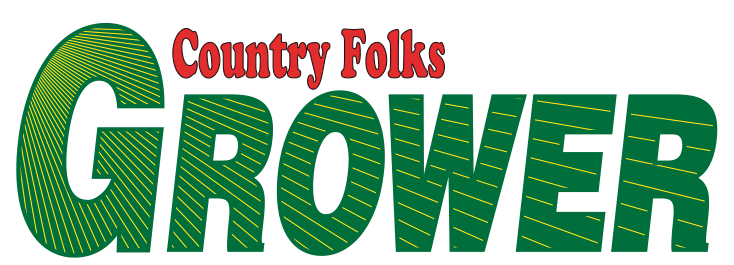A long-term bet on truffles
In 2022, Mimi and Evan Kokoska received a $15,000 Sustainable Agriculture Research & Education (SARE) grant to establish a large-scale truffle orchard. Their farm, Koko Earth Farms, is located in Zionsville, IN. The couple shared their story at the 2025 Indiana Small Farm Conference.
Truffles are underground mushrooms in the fungi kingdom. The part of the truffle that most people see looks like a small, lumpy potato. This is the part of the fungus that creates spores for reproduction. Truffles also send out extensive system of rootlike filaments called hyphae.
Unlike mushrooms, truffles develop entirely underground in a symbiotic relationship with trees. The truffle hyphae latch onto the roots of trees, providing trees with extra water and nutrient absorption. The trees give truffles sugar in return.
Historically, people wild harvested truffles, but in the 1970s, they began experimenting with cultivation. There are now successful orchards in Virginia, North and South Carolina, Tennessee, Kentucky, California, Oregon, Washington, Idaho, British Columbia, Ontario and Quebec. West Virginia, Maryland and Delaware also have orchards that are nearing their first harvest.
Cultivating truffles requires a long-term commitment because it takes roughly five to eight years (or even longer) for trees to start producing truffles. The Kokoskas’ orchard is now in its fourth growing season, requiring significant labor and expense as they patiently wait, fingers crossed, to harvest this prized culinary ingredient.
Establishment
The Kokoskas planted their orchard into a five-acre field that was formerly in a corn-soybean-winter wheat rotation. Because truffles prefer an alkaline environment, in 2021, in anticipation of planting, they spread 24 tons of lime/acre.
Following the lime application, they added some straw to increase the organic matter, disked the field and then planted a custom cover crop blend of forbs, grasses and legumes to improve the soil.
In March 2022, they started planting oaks inoculated with Burgundy truffle (Tuber aestivum) – 667 bur oaks (Quercus macrocarpa) and 667 English oak (Q. robur), which they purchased from New World Truffieres, an Oregon nursery.
“The benefit of this relatively higher planting density is to promote earlier closure of the canopy to minimize sunlight reaching the soil as in interior forest conditions to promote truffle growth,” they shared in a SARE update.
They used an eight-inch auger mounted on a Bobcat skid steer to drill the holes, planting at a density of 416 trees/acre. In each hole, they placed the tree along with a metal T-post that supports a tree tube. The five-foot-tall tubes protected the young trees from wind, deer and rodents, and a direct herbicide spray eliminated the need for fencing the orchard.
They also provide “a little greenhouse effect,” said Evan. Each tube is capped with a piece of netting to prevent birds from getting stuck in them.
A downside to this planting method, they discovered, was the bending of the tree tubes due to high winds. In retrospect, they wish they had used a smaller auger and embedded the metal T-posts outside the augered holes. “It may facilitate a higher stake height and better vertical support of the five-foot tree tubes to reduce risk of bending,” they said.
Of the 1,334 trees planted in 2022, 53 died; the Kokoskas replaced them in 2023. In 2024, they planted the remaining field with 650 more trees – a combination of bur oaks and American hazelnuts (Corylus americana). These were inoculated with Tuber canaliculatum, commonly called Michigan or Appalachian truffle. Unfortunately, 50% of the hazelnuts died, and in 2025 they replaced them with chinquapin oak (Q. muehlenbergii) for a total of 2,000 trees.
Maintenance
During the growing season, they mow the lanes between the tree rows with a brush hog and use an herbicide to spot treat the weeds around the trees, which creates a nice mat of mulch around each tree. Their goal is to eliminate competition from grass and weeds within the root zone where truffles will develop. Ideally, they spread some compost around each tree post-spraying.
They also manually pull up the tree tubes and hand weed anything in the tubes. This, combined with the mowing, is their best strategy for preventing any noxious common cocklebur – a weed they struggle to control – from going to seed.
Japanese beetles pose a significant threat to the young trees where they get into the tree tubes and demolish the leaves. The beetle problem occurs June through August, with peak issues typically ending by late July.
The Kokoskas have a multi-prong approach for controlling Japanese beetles. On the eastern (downwind) side of the field, they place eight pheromone bag traps which fill up within a week. They are planning to switch to weighted buckets because they have had raccoons tear the bags to eat the beetles.
Milky spore, a bacterium that specifically targets Japanese beetles, is another important strategy. It kills the grubs in the soil without disrupting the mycorrhizal relationship between the trees and the truffle fungi. The plan is to use the powder form of milky spore rather than the granules because it can last up to 10 years vs. one season for the granules.
While oak trees are drought-tolerant, constant soil moisture is ideal for truffles (though exact water needs are still unknown). 2022 and 2023 were among the driest years in the last decade in their part of Indiana, and they currently use a water reel system with a turbine to deliver water to the young trees. The system, however, is inefficient and prone to breakage, and they are working with a consultant to design a drip irrigation system.
Going Forward
If these management techniques prove fruitful, the Kokoskas should have truffles within this decade. Some of their oaks are already 11 feet tall. Mimi especially shared her love of truffles, one of the most expensive ingredients in the world.
She said, “My first taste was actually in Paris. You just don’t forget. I went back to the same restaurant the next night. That kind of started my whole journey. Truffles have a way of elevating everything around you.”
While they’re waiting, the couple is researching how to train a truffle dog. Historically, pigs sniff out the subterranean delicacy, but they’re prone to eating them. They’re also envisioning how to market truffles to local chefs, agritourists and creameries.
According to Mimi, any fat is an excellent vehicle for the truffle – you only need to place some cream near a truffle because fat naturally absorbs its intense aroma.
“There’s no doubt about it. People will come. You build it, and they will come,” she said.
by Sonja Heyck-Merlin




